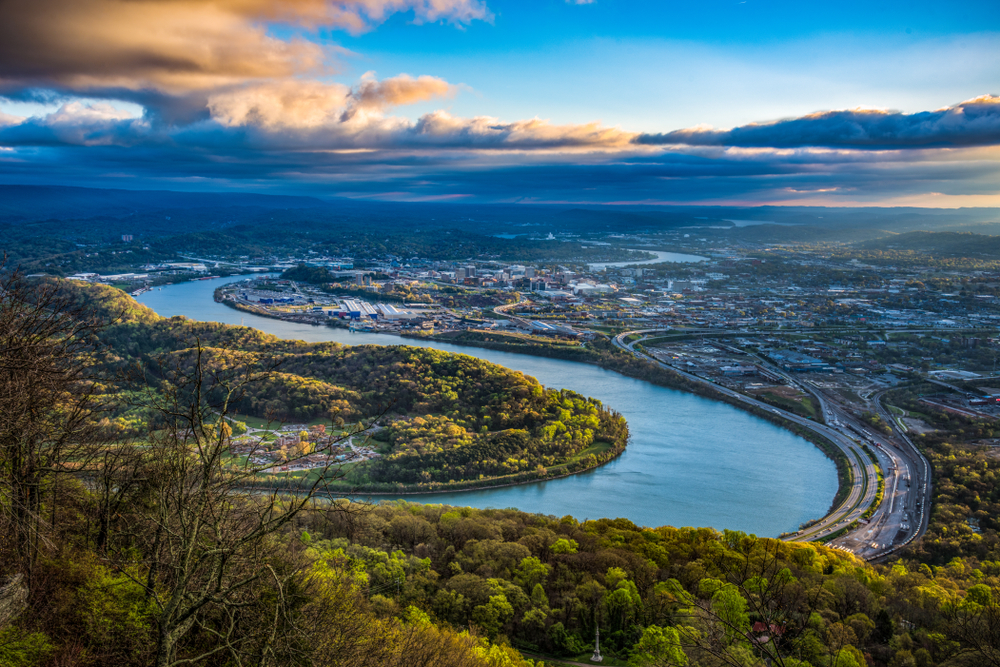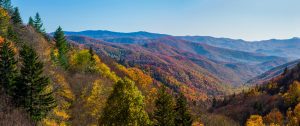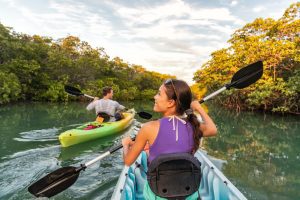Tennessee’s few major river systems extend into an endless list of tributaries resulting in an impressive number of beautiful rivers.
With such beautiful destinations in the state, like the Great Smoky Mountains National Park, there is always some kind of picturesque scenery to enjoy during your visit.
Unfortunately, however, many of Tennessee’s rivers have a problem with water pollution, which makes it difficult to find a clean body of water to relax at.
But while some rivers have taken a turn for the worse, like the Tennessee River, there are quite a few rivers that have managed to escape the grasp of pollutants.
This is thanks to both the efforts of the Environment Protection Agency and to the remote locations of these rivers. There are twelve rivers in Tennessee, and we’ve created a list of them to make it easy for you to choose your next relaxing river destination.
Table of Contents
1. Big South Fork
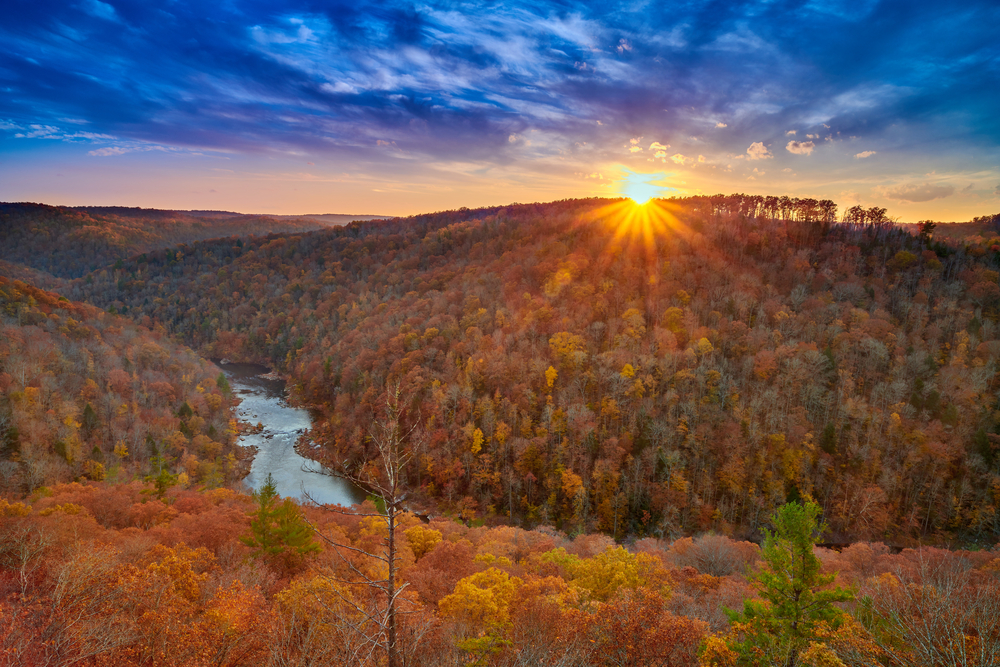
Although technically a part of the Cumberland, Big South Fork National River and Recreation Area has earned the right to its own section on the list of cleanest rivers in Tennessee.
In fact, most people who visit this area refer to the glistening body of water as the Big South Fork River, and it is not hard to figure out why.
This portion of the river forks off into multiple directions, creating unique river gorges unlike anything else you’ll find in the state.
And if the geologic formation of this river isn’t enough to dazzle, the pristine clearness of the water ought to do the trick.
Frequent rain in the area has created a rushing flow of water that allows for some exciting kayaking and whitewater rafting trips; you’ll get to take in the beauty of the towering sandstone cliffs and rugged shoreline while you make your way through thrilling river rapids.
Located within the Cumberland Plateau, the formation of this tributary river dates back millions of years when Tennessee was just an inland sea.
Once the land rose and filled the space where the sea used to be, all that was left in its place were the unique formations carved by the tears of erosion.
Over time, as the land experienced rainfall, water began to fill the deep gorges, and bodies of water like the Big South Fork River were formed.
This means that not only will a visit here let you see some of Tennessee’s natural beauty, but it will also take you on a tour through geological history.
In addition to the river itself, the recreation area that surrounds it stretches out over one hundred thousand acres and offers a large variety of interesting hiking trails.
One of the most popular trails here is the Twin Arches, and it takes you to two of the many natural bridges that can be found in the area.
The trail is just about one and a half miles round trip and uses stairs to help with the steepness of the descent down to the base of the arches.
These arches are considered to be the most famous of their kind in all of the Eastern United States and one visit here will leave you speechless.
2. Buffalo
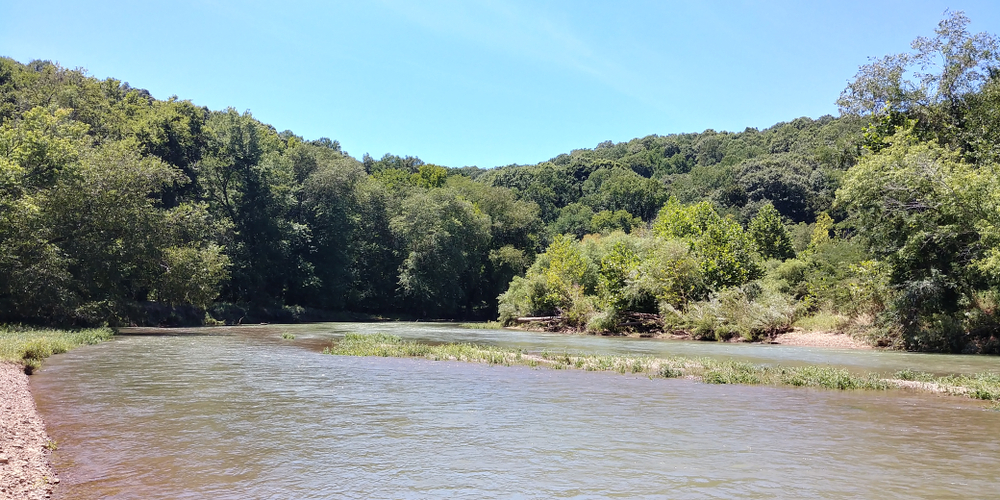
Known for being one the longest rivers in Middle Tennessee, the clearness of the water is one of the many reasons to love the Buffalo River.
Like most rivers in Tennessee, the Buffalo River is a tributary of another river (Duck River), but it is still a whopping 125 miles long all on its own.
The river gets its name from the buffalo fish that used to flood the waters here, and although they are not as common today, there is still a good chance you might spot one of these giant suckers.
In fact, the buffalo fish is the largest suckerfish species on the continent, so don’t be surprised when you see an abundance of fishermen out on the water trying to catch one.
And while the water is clean enough for swimming, it should always be done with caution, as the water is also home to the massive alligator snapping turtle.
The most popular activity on the river is usually just canoeing or kayaking across the water and taking in the sights of the lush greenery.
But if you are looking for a weekend adventure, consider booking a trip to the Buffalo River Resort in Lobelville.
Here you will have access to an abundance of activities from tubing to horseback riding and everything in between.
It is known for being one of the most entertaining campgrounds in the state and offers cozy cabins, RV hook-ups, and scenic tent sites.
While you are in Lobelville, make sure to check out its quaint downtown area with charming little restaurants and local shops to explore.
And just remember to keep a close eye out during your water-based adventures as wildlife sightings are frequent in this remote area.
3. Caney Fork
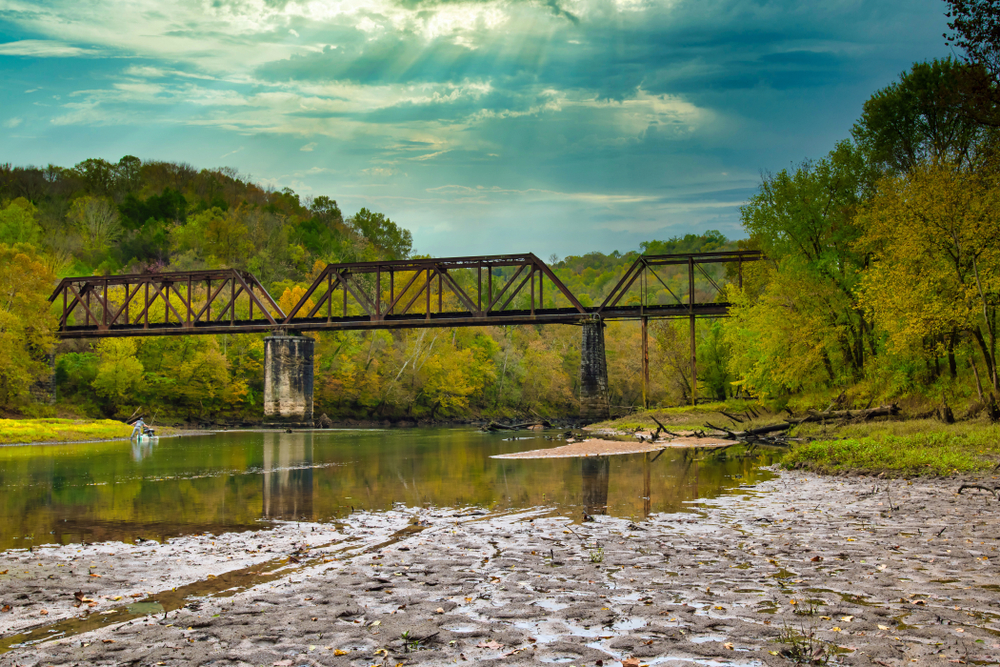
Another tributary of the Cumberland River is the Caney River, so it comes as no surprise that it is also one of the cleanest rivers in Tennessee.
This river stretches out nearly one hundred fifty miles and offers visitors the ability to enjoy a large variety of outdoor activities.
And since the river is so long, it travels throughout many different picturesque environments including two state parks.
Edgar Evins State Park is made up of six thousand acres and is known for its massive marina, scenic campground, and abundance of waterfront hiking trails.
The smaller Rock Island Park caps out at 883 acres and boasts breathtaking features like the Great Falls Gorge, Twin Falls, Spring Castle, Great Falls Cotton Mill, and more.
When you aren’t exploring the many wonders of these state parks, you should definitely be out relaxing on the river’s peaceful waters.
Locals and tourists alike come here to escape the hustle and bustle of everyday life and go for a quiet float.
The river is located just far enough off the beaten path that isn’t subjected to any sounds of human life like traffic, so you can really feel one with nature.
Grab your kayak or your canoe and head to any of the river’s many boat launches for the perfect way to unwind after a busy week.
Just don’t forget your fishing rod, as Caney Fork is overflowing with rainbow and brown trout.
4. Duck

Stretching out an incredible 284 miles, Duck River is the longest of its kind, is located completely within Tennessee, and it just so happens to also be one of the cleanest in the state.
Duck River is also home to more than one hundred fifty species of fish and over fifty types of mussels. This not only makes it an ideal place for fishing, but it also earns Duck the title as one of the most biodiverse rivers in all of North America.
It only makes sense that strong efforts have been made to ensure that the river stays extremely clean to maintain this unique location.
Duck River is also used as the drinking water for a quarter of a million Tennessee residents. Therefore, the cleanliness of the water is of the utmost importance for the safety of both the animals that live there and the humans that drink from it.
In fact, the Nature Conservancy has gone above and beyond to ensure that the river stays protected and has been working with as many local businesses as possible to make it happen.
The conservancy was even able to obtain nearly one million dollars to give to farmers to help make sure that they are practicing the safes farming methods near the riverbed.
But aside from the guaranteed cleanliness of the water, there are many other reasons to love the Duck River.
For starters, it is beautiful! Back in 2001, nearly forty miles of the river was officially classified as a State Scenic River because of all that Duck has to offer.
Launch your boat, kayak, or canoe at any of the nine access points and prepare to be amazed by the wide-sweeping fields, rugged rock cliffs, and dense forest greens.
You will even have the chance to pass through the Yanahli Wildlife Management Area, which stretches out over twelve thousand acres and boasts an equally diverse wildlife scene.
5. Clinch
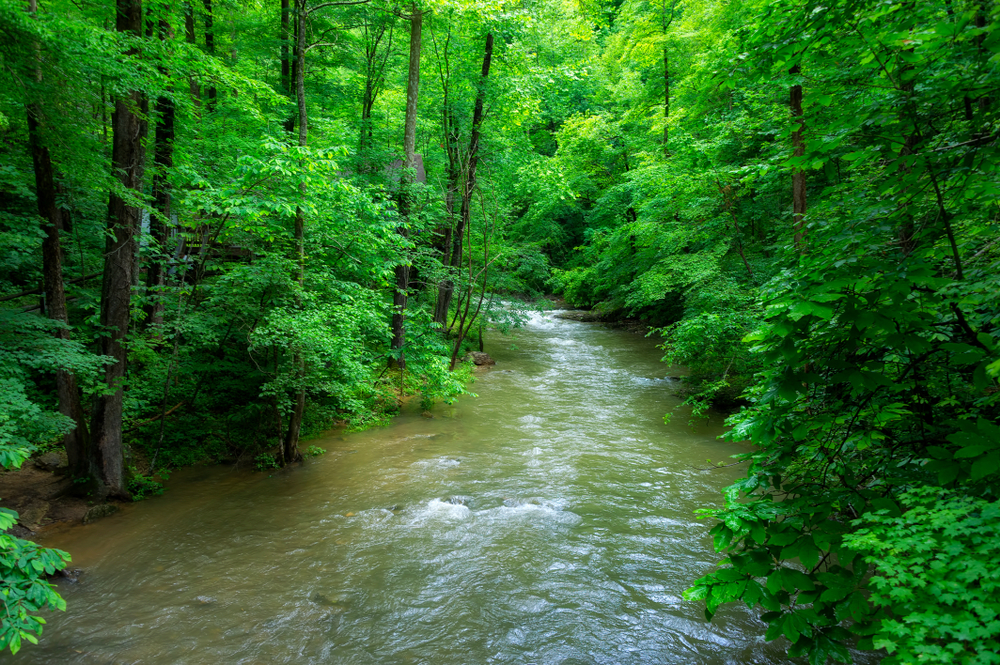
Located in the charming town of Norris, Clinch River is a popular place to hang out and boasts some of the clearest waters in Tennessee.
Although the river is not located entirely in the state, there is no denying its impressive size, as it stretches out over three hundred miles between Tennessee and Virginia.
The water travels through the Great Appalachian Valley, so you are guaranteed spectacular views regardless of what part of the river you end up on.
At one point, the river suffered from an increasing amount of pollution caused by mining, but environmentalists have taken charge to bring this river back to its original state of cleanliness.
The main reason that efforts were made to turn this river around is the fact that it is home to a variety of rare species, and the most frequently spotted fish are rainbow and brown trout, so you can bet that there are always fishermen out on the water looking for a catch.
If you are not into fishing, there are still plenty of other ways to enjoy the river, like visiting one of the three state parks located along its edges.
Big Ridge State Park is made up of 3,687 acres and offers plenty of hiking trails along the river as well as its namesake, Big Ridge Lake.
Norris Dam Park is one of the most popular options in the area, thanks to its impressive and historic damming system, but there is plenty more to see amongst its 4,038 acres.
Chuck Swan State Forest will take you exploring through ancient woods with an endless selection of trails within its 24,702-acre borders.
But no visit to Clinch would be complete without floating down the river, and there is a fine selection of class rapids available for all experience levels.
6. Cumberland
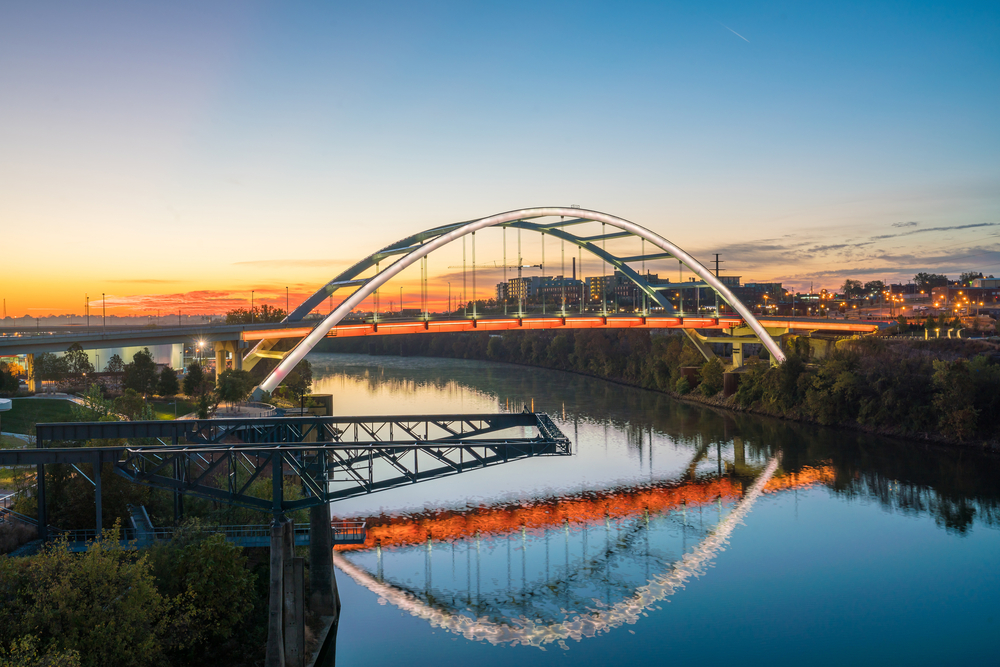
Known as one of the major waterways in the southern part of the United States, the Cumberland River stretches out nearly seven hundred miles and also manages to be one of the cleanest rivers in Tennessee.
The river flows between Tennessee and Kentucky and offers endless opportunities for water-based activities, wildlife sightings, and hiking adventures.
Of the 688-mile river, more than three hundred miles can be found in Tennessee, traveling through four different cities along the way.
Depending on what part of the river you launch your boat in, you may find yourself in a quiet, rural town like Dover or a bustling city like Nashville.
In fact, the river is so large that it gives way to nearly ten major tributary river systems, so there is always somewhere new to explore.
And the beauty of this river is that it can be accessed at any time of year, with ideal conditions that make cruising amongst the scenic valleys as easy as can be.
A great way to explore the river is to launch in an area where the city meets rural life so you can get the best of both worlds during your travel.
One minute you will be passing grazing cows and the next you will be in awe of the many flashing lights that make up the famous streets of Nashville.
And speaking of Nashville, make sure to stop by this big city to check out some of its exciting attractions like the Johnny Cash Museum, Robert’s Western World, and the Belle Meade Plantation.
7. French Broad
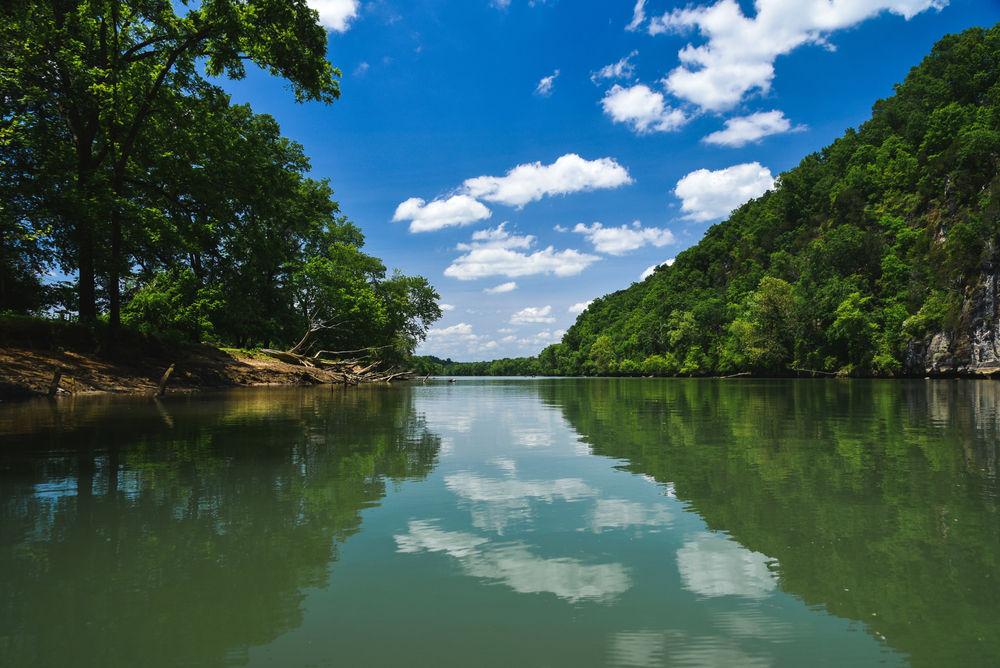
Located within the states of Tennessee and North Carolina, the French Broad River flows for an impressive 218 miles and offers some of the cleanest waters for outdoor adventure.
But what really makes this river so special is that it is one of the oldest rivers in the world! In fact, the only rivers that are older than French Broad are the Nile and New River.
And to take things even further, French Broad is one of the very few rivers in the world that flows in a northern direction.
There are plenty of ways to enjoy your time on the water but one of the most popular activities is a thrill-filled white water rafting tour.
All along the river, you will find a slew of outdoor adventure establishments offering all kinds of whitewater rafting experiences so fun is never out of reach.
Plus, the river is known for having all different kinds of water conditions, so you can always opt for a rafting experience that avoids the harshest sections.
This is part of what makes the river such a popular place as adventure seekers love the challenge of rough rapids whether it be with a guide or on their own.
At the same time, there are sections of the river that are so calm that you would never think that white water rafting could be possible.
These sections are great for peaceful floating trips or a quiet afternoon of fishing to help you unwind after a long week.
Adventure seekers may opt for more thrilling activities like canyoneering, where they will get to hike along the river’s edge, scale some cliffs, and rappel down waterfalls.
Also, the iconic city of Knoxville is located just a short drive from the river, and you can easily spend an entire day exploring its streets.
It is worth a trip to walk down Knoxville’s thriving Market Square filled with everything you could ever need, hang with the animals at Zoo Knoxville, and learn a bit of history at James White’s Fort.
8. Nolichucky
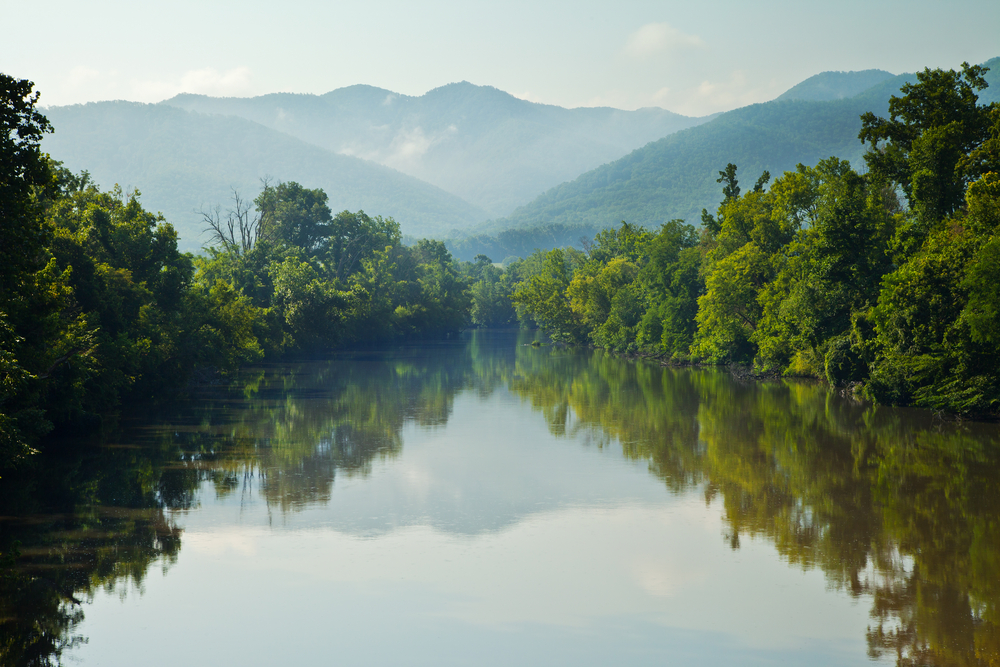
Although this river starts in North Carolina, much of the Nolichucky River travels through Tennessee and it is just as clean as it is beautiful.
It is so breathtaking in fact, that it has been listed as one of the most beautiful rivers in the United States time and time again.
This is because it curves through a variety of mountain ranges that ensure that you always have lush greenery and towering rocks to admire.
The river is actually located within the deepest river gorge in the eastern United States, so you feel completely surrounded by mountains.
And when you are not taking in the endless mountain views, you can be partaking in an afternoon of white water rafting through its rapids.
Parts of this river can be a bit extreme, and this is why the Cherokee named it Nolichucky, or “Rushing Water,” so remember to proceed with caution.
Unfortunately, there have been quite a few accidents along this river where people have drowned because they underestimated the conditions of the water.
But not all sections of the river are the same, and there are even designated sections where you will see families wading in the calm waters.
This also means that depending on what part of the river you are on, you will have access to rapids varying from Class I to IV, so all experience levels can enjoy the water.
9. Elk

Stretching out nearly two hundred miles, the clean waters of the Elk River make for the perfect day for outdoor enthusiasts.
The river travels through both Alabama and Tennessee, but most of the natural beauty that leaves paddlers in awe lies on the section that travels through Tennessee.
A portion of the river has even been declared a scenic floatway, and its calm conditions draw in visitors from near and far to relax on its waters.
With such an extensive river system to work with, it only makes sense that there are some sections that experience rapids, but not enough to cause alarm or to warrant a whitewater rafting adventure.
Most people who come to the river are just looking for a peaceful place to paddle along in their kayak or to enjoy a quiet afternoon of fishing.
In fact, fishing along this river is one of the most popular things to do since there are trout and panfish in abundance here.
And there is a good chance that you will spot wildlife on your float, as many sections of this river take you to untouched parts of dense forestry.
10. Ocoee
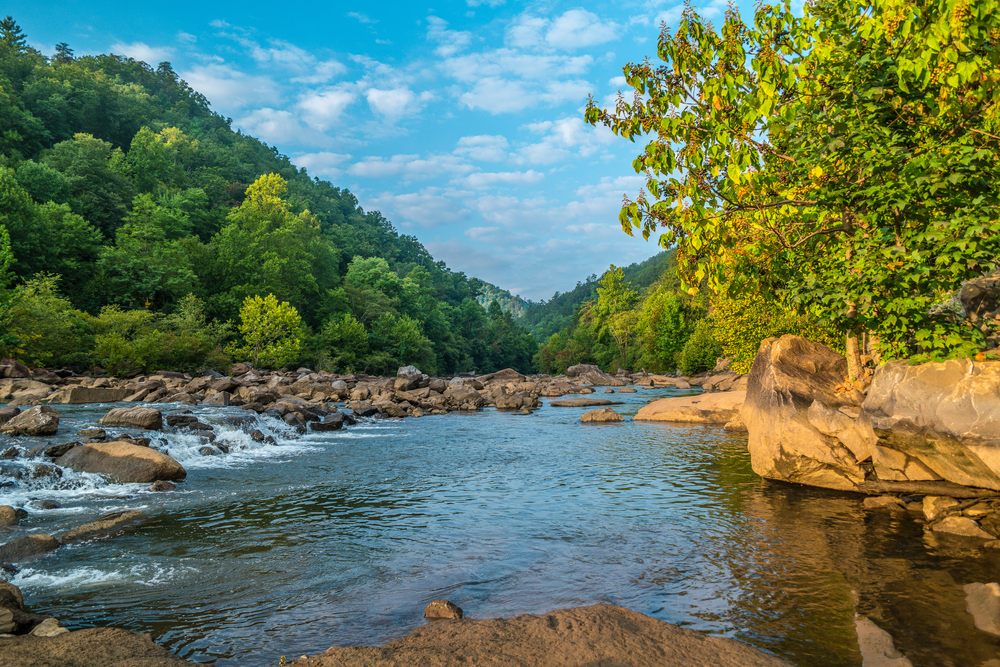
Often referred to in combination with the Toccoa River, the Ocoee River stretches out nearly one hundred miles with a good portion of it traveling through the picturesque scenery of the Appalachian Mountain Range.
Much of the river remains completely untouched by human life and given its remote location, Ocoee has managed to stay incredibly clean throughout the years.
And the water here is always rushing. Ocoee is famous for its whitewater rafting experiences and you’ll find plenty of rafting businesses ready to take you out on an adventure.
The rapids range from Class I to Class V, so there is something for all experience levels to enjoy and guides are always willing to take you where you feel most comfortable.
With that being said, visitors should be extremely cautious when visiting on their own, as even the calmest looking waters will have some pull to them.
You will find most of the excitement at Ocoee Scenic River State Park where you will find a plentiful number of people rafting, kayaking, fishing, and hiking.
A popular hiking trail in this park is the John Muir Trail because it takes you down into the river gorge and provides breathtaking views all the way.
This is also where you will find a variety of public boat launches that make it easy to get out on the water at any given time.
Right down the road is the Gee Creek Campground, where you can enjoy a night of primitive camping in any of the 47 tent sites.
Plus, a portion of the river can be found right off of the scenic byway, so there are plenty of other breathtaking sights to enjoy like mountain summits, rugged bluffs, dense forests, Lake Ocoee, and so much more!
11. Watauga
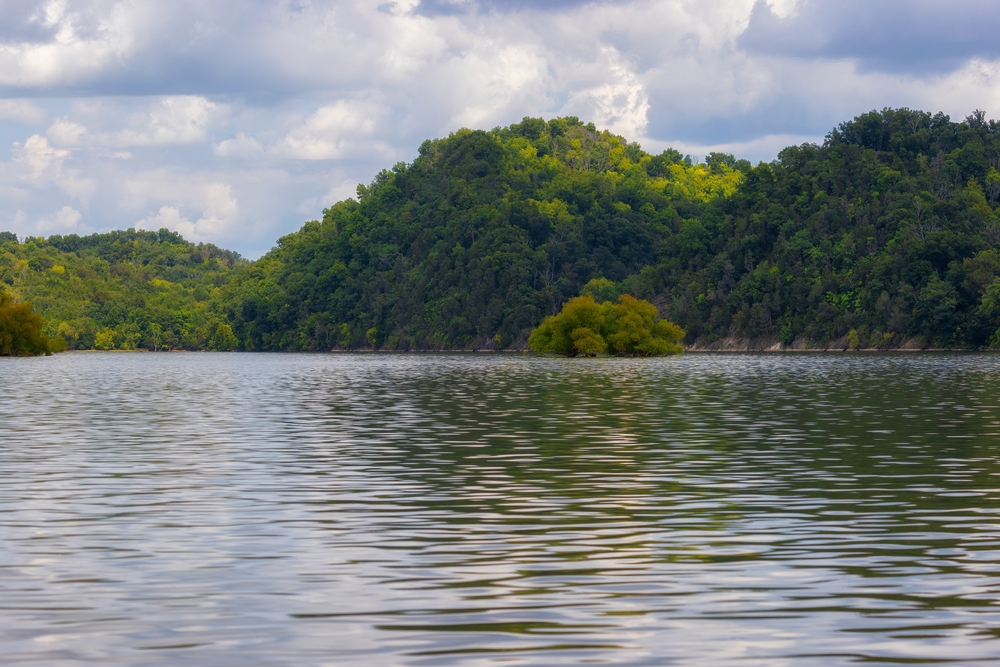
Known as the largest stream that travels from the western edge of North Carolina to the east of Tennessee, the Watauga River is dignified for a variety of reasons, but one of its noble features is the cleanliness of its water.
Although the reasoning behind the name for this ancient river is undetermined, it is believed to be named after a Native American Village who referred to it as “beautiful water”.
And as beautiful as this river may be, most people that travel here haven’t come to check out the scenery.
The river is home to one of the only bodies of water that have been classified as Trophy Fishing waters in the entire state of Tennessee.
So, while you may find the occasional sightseer, most people are here to try their hand at fishing in hopes of catching a trophy-sized rainbow or brown trout.
Keep in mind that while some sections of the river are possible to wade in, the best way to fish on these waters is by boat and there are special rules for this put in place by Tennessee Wildlife Resource Agency.
If fishing isn’t your style, head down south of the river where you will find the picturesque Watauga River Bluffs boasting vibrant wildflowers.
And of course, you can never go wrong with an afternoon of whitewater rafting!
12. Tellico
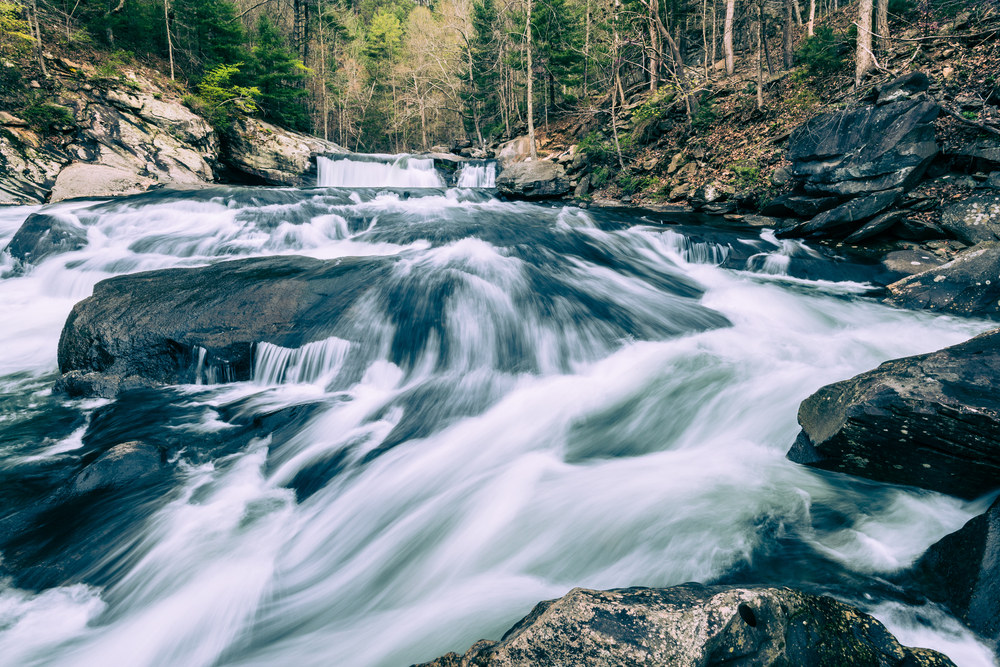
Flowing from the western part of North Carolina to the eastern edge of Tennessee, the Tellico River takes you through the iconic Blue Ridge Mountains while treating you to crystal-clear waters all along the way.
This beautiful river stretches out a little over fifty miles and boasts a variety of breathtaking features like waterfalls, rapids, mountain ranges, wildlife sightings, and more.
Plus, Tellico is renowned for its fishing, so you will see plenty of people out and about attempting to catch brown, brook, and rainbow trout.
Picnic tables are peppered along the river’s edges, so there are plenty of opportunities to enjoy a waterfront lunch.
And you can never go wrong with taking your kayak out on the river for a peaceful float or finding some rapids to enjoy a day of whitewater rafting.

